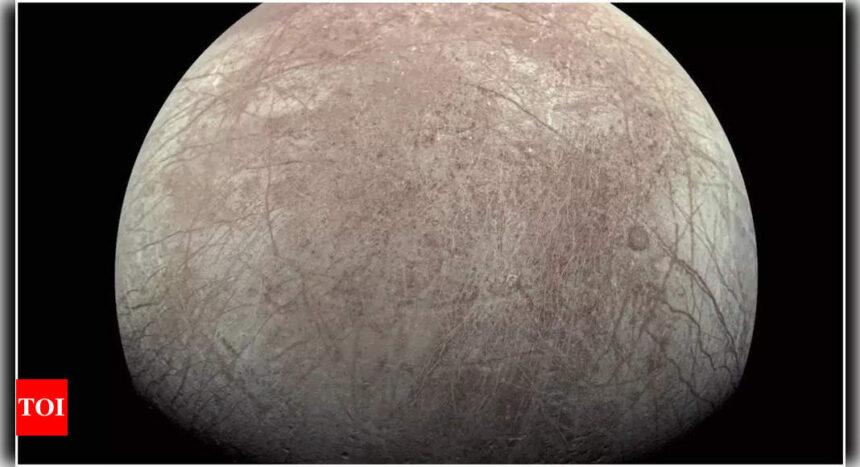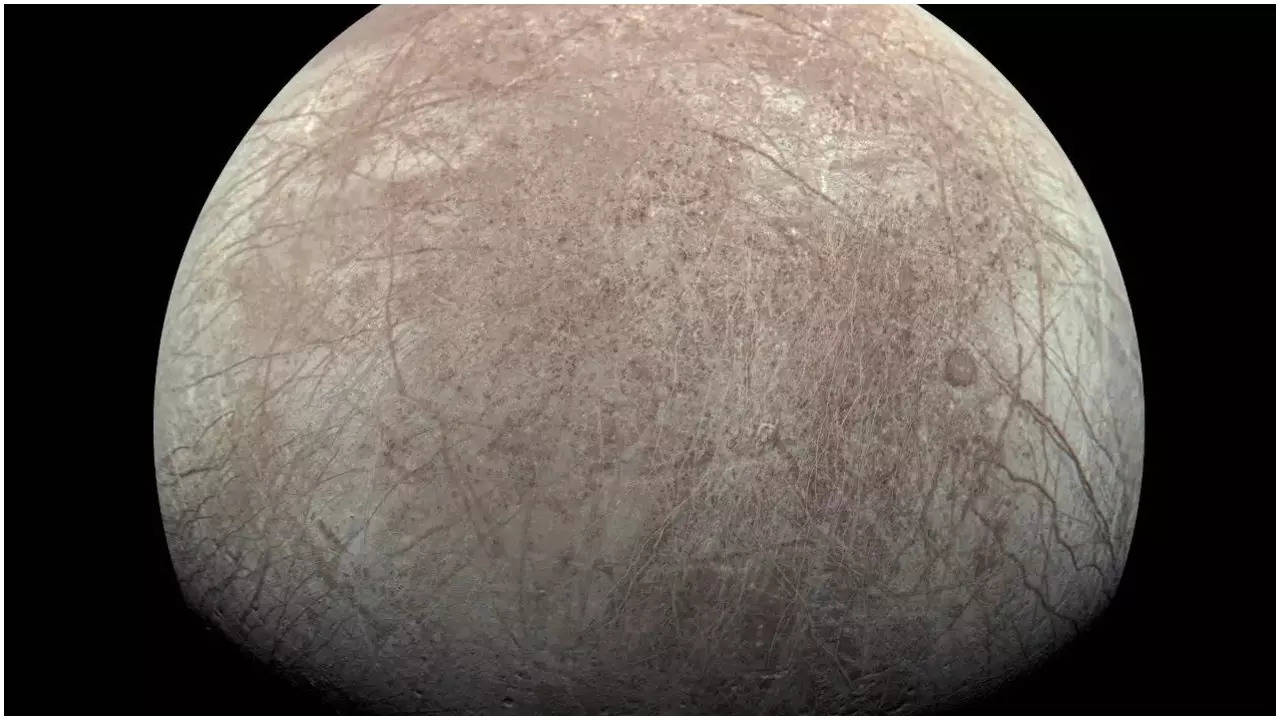NASA is gearing up for the launch of its Europa Clipper spacecraft, scheduled for October 10, to explore Jupiter’s mysterious moon, Europa. The mission, carrying a price tag of $5 billion, aims to uncover whether the icy moon could harbor life beneath its frozen surface.
The spacecraft recently passed a crucial review, confirming its ability to survive the intense radiation environment around Europa.“We are ready for Jupiter,” said Jordan Evans, project manager at NASA’s Jet Propulsion Laboratory, after months of rigorous testing on Europa Clipper’s transistors, which had raised concerns earlier this year due to reliability issues seen in other projects, AP News Agency reported.
The transistors are expected to degrade during the spacecraft’s 49 flybys of Europa but will recover during three-week intervals between each flyby.
A narrow window for launch
The mission’s timing is critical. Set to launch aboard a SpaceX Falcon Heavy rocket, Europa Clipper has a narrow three-week window for liftoff. If it misses this slot, NASA will have to wait over a year for the next favorable planetary alignment, which requires gravity assists from both Mars and Earth.
Six years to Jupiter
Once launched, it will take the largest spacecraft NASA has ever built for planetary study six years to reach Jupiter. Upon arrival, Europa Clipper will orbit the gas giant every three weeks, capturing detailed data on Europa’s surface during close flybys, some as near as 16 miles. The spacecraft, spanning over 100 feet with its solar panels deployed, will map nearly the entire moon using high-tech instruments, including an ice-penetrating radar.
Symbol of Earth’s connection
Europa, known for its subsurface ocean with more than twice the water found in Earth’s oceans, holds the potential for harboring life. Europa Clipper will carry a triangular metal plate symbolizing Earth’s connection to this enigmatic moon, as it embarks on a mission that could change our understanding of the universe.
As the launch date approaches, NASA’s team remains confident. “We’ve tested everything possible to ensure a successful journey,” said Evans.
The spacecraft recently passed a crucial review, confirming its ability to survive the intense radiation environment around Europa.“We are ready for Jupiter,” said Jordan Evans, project manager at NASA’s Jet Propulsion Laboratory, after months of rigorous testing on Europa Clipper’s transistors, which had raised concerns earlier this year due to reliability issues seen in other projects, AP News Agency reported.
The transistors are expected to degrade during the spacecraft’s 49 flybys of Europa but will recover during three-week intervals between each flyby.
A narrow window for launch
The mission’s timing is critical. Set to launch aboard a SpaceX Falcon Heavy rocket, Europa Clipper has a narrow three-week window for liftoff. If it misses this slot, NASA will have to wait over a year for the next favorable planetary alignment, which requires gravity assists from both Mars and Earth.
Six years to Jupiter
Once launched, it will take the largest spacecraft NASA has ever built for planetary study six years to reach Jupiter. Upon arrival, Europa Clipper will orbit the gas giant every three weeks, capturing detailed data on Europa’s surface during close flybys, some as near as 16 miles. The spacecraft, spanning over 100 feet with its solar panels deployed, will map nearly the entire moon using high-tech instruments, including an ice-penetrating radar.
Symbol of Earth’s connection
Europa, known for its subsurface ocean with more than twice the water found in Earth’s oceans, holds the potential for harboring life. Europa Clipper will carry a triangular metal plate symbolizing Earth’s connection to this enigmatic moon, as it embarks on a mission that could change our understanding of the universe.
As the launch date approaches, NASA’s team remains confident. “We’ve tested everything possible to ensure a successful journey,” said Evans.
Source : Times of India









